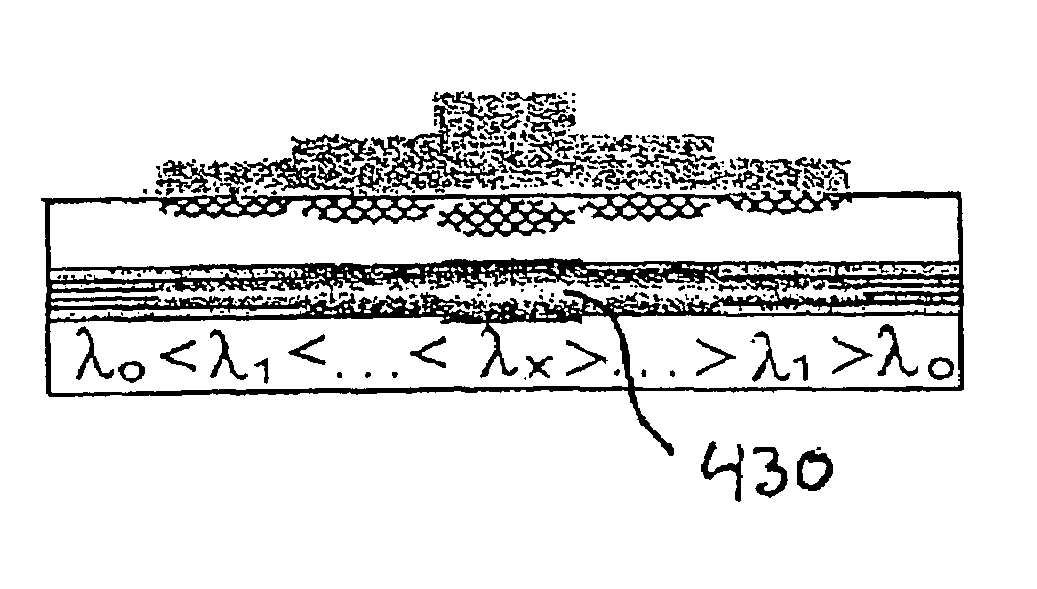Optical broadband emitters and methods of making the same
a broadband emitter and optical technology, applied in the field of optical broadband emitters, can solve the problems of limiting the axial spatial resolution, signal quality, and the power and bandwidth of the current bio-imaging and probing system using optical coherence tomography (oct) technology, and the development of a gaussian spectrum and spectrally flat optical output light source that spans across a wide spectrum range remains a great challenge, and the intensity of a single spatial mode is no
- Summary
- Abstract
- Description
- Claims
- Application Information
AI Technical Summary
Benefits of technology
Problems solved by technology
Method used
Image
Examples
Embodiment Construction
[0031]In the following detailed description, reference is made to the accompanying drawings, which form a part hereof, and in which is shown, by way of illustration, different embodiments in which the invention may be practiced. These embodiments are described in sufficient detail to enable those skilled in the art to practice the invention. Other embodiments may be utilized and structural, logical, and electrical changes may be made without departing from the scope of the present invention.
[0032]The terms wafer and substrate used in the following description include any structure having an exposed surface onto which a layer is deposited according to the present invention, for example to form the integrated circuit (IC) structure. The term substrate is understood to include semiconductor wafers. The term substrate is also used to refer to semiconductor structures during processing, and may include other layers that have been fabricated thereupon. Both wafer and substrate include dop...
PUM
 Login to View More
Login to View More Abstract
Description
Claims
Application Information
 Login to View More
Login to View More - R&D
- Intellectual Property
- Life Sciences
- Materials
- Tech Scout
- Unparalleled Data Quality
- Higher Quality Content
- 60% Fewer Hallucinations
Browse by: Latest US Patents, China's latest patents, Technical Efficacy Thesaurus, Application Domain, Technology Topic, Popular Technical Reports.
© 2025 PatSnap. All rights reserved.Legal|Privacy policy|Modern Slavery Act Transparency Statement|Sitemap|About US| Contact US: help@patsnap.com



